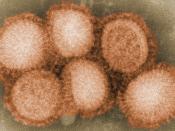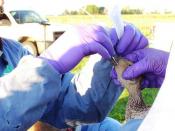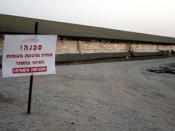Imagine staying in a charming log cabin in the mountains. It is a beautiful day. The sun is shining; the birds are singing. Hearing the soft song of a whippoorwill or the low coo of a dove typically conjures thoughts of a peaceful and serene environment. Imagine instead that the sweet wild birds and those beautiful songs fill you with a cold terror. A shiver runs down your spine as you suddenly realize that disease-ridden, killer birds harboring a deadly virus surround you. Slowly, carefully, you make your way back to the cabin and lock yourself inside.
Is this a scene from an old Hitchcock movie? No. We may be destined for this reality if the Avian Influenza becomes an epidemic. It currently takes the form of a tiny flu virus hosted by wild birds. The wild birds can easily infect our domestic birds, which can in turn, infect humans.
Just eight years ago in Hong Kong, there was an outbreak of bird flu in humans. Eighteen people were infected, six of whom died. There have been infections reported recently in Thailand, Vietnam, and Cambodia. The death rate from these reported outbreaks has been about 50 percent.
"Many scientists believe it is only a matter of time until the next influenza pandemic occurs. The severity of the next pandemic cannot be predicted, but modeling studies suggest that its effect in the United States could be severe. In the absence of any control measures (vaccination or drugs), it has been estimated that in the United States a "medium-level" pandemic could cause 89,000 to 207,000 deaths, between 314,000 and 734,000 hospitalizations, 18 to 42 million outpatient visits, and another 20 to 47 million people being sick. (Center for Disease Control [CDC], 2005)."
Not all is lost, however. If we are proactive in...


